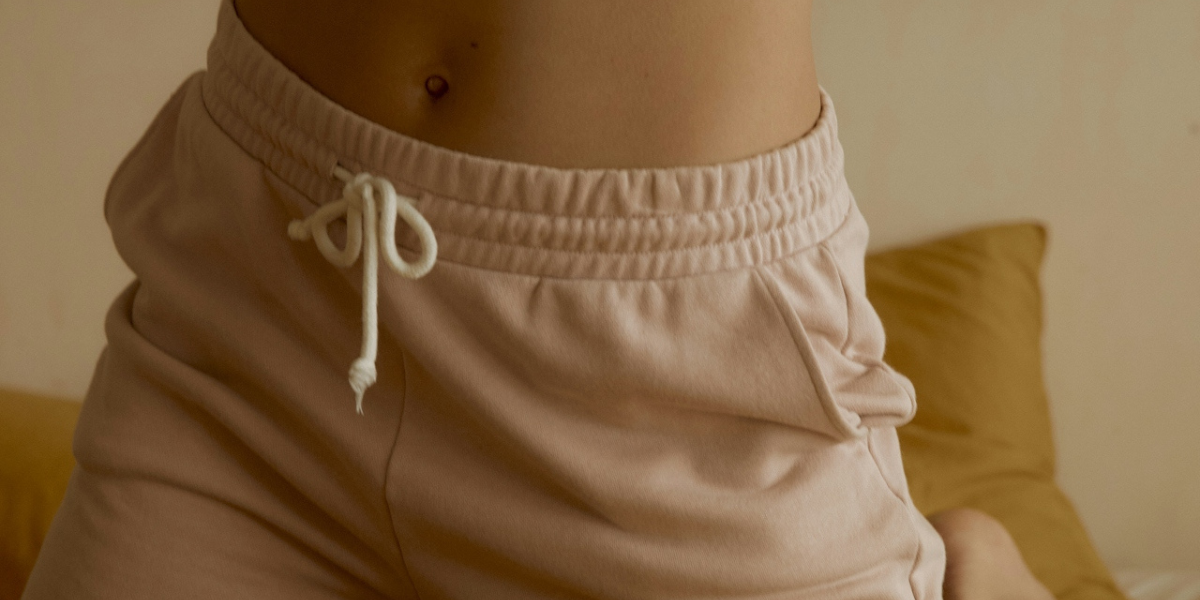Masks! It’s summer 2020 and we’ve gotta wear them. And we will, of course, because we care about public health and each other. But what about if you have glasses? Those of us trying our best not to spread coronavirus and also wear frames on our faces that allow us to, you know, see, are having a rough time. As the weather gets warmer, protests across the United States continue, and many of us are forced to go back to work or risk getting fired – giving us all plenty of reasons to want / need to be sharing space with other people more frequently – it’s more important than ever to figure out how to successfully wear a mask without your glasses getting all foggy.
To attempt to solve this problem, I crowdsourced on my Instagram. I got a lot of feedback and more than a few requests to share the advice once I’d compiled it, so that’s how we all got here today! It seems like the three main things to know when attempting to combat mask-induced-glasses-fog are that (1) you can change what you’re doing with your glasses, (2) you can change what you’re doing with your mask, and (3) from multiple doctors, with quite a bit less optimism than the rest of the advice I’m about to share: unless you have a properly fitted N-95 surgical mask, you’re kind of out of luck.
But let us remain committed to optimism! It seems like the general goals when aiming to avoid fog are to have a very tight top seal, to keep your glasses firmly situated in one place, and to bring in an outside source (either paper, fabric, or coating) to soak up or repel that excess moisture.
14 Tips for Keeping Your Glasses Fog-Free When Wearing a Mask
1. Choose the right mask for you
Try many different masks to find the best fit for your face; sometimes one shape will cause fogging and another shape will be perfect, fog who? The person who gave me this advice told me they realize it seems like a waste of money, but finding the perfect mask can be life-changing and your comfort and safety are worth the cost of a few wrong purchases. Plus, if you wash or boil your mask, you can trade with a friend to see if the styles you purchased that don’t work for you do work for someone else!
2. Experiment with where your mask sits on your face
Some people said they wear the mask lower down on their faces so it doesn’t overlap with their glasses.
3. Experiment with where your glasses sit on your face
A lot of people said they now wear their glasses very far down their noses, “to the point of looking pretty ridiculous,” one person admitted.
4. Get new glasses
This is an expensive option and I’m mostly kidding (I mean, I’m totally kidding – I will certainly not be buying new glasses for this situation) but if you’re in the market to buy a new pair, get frames with little nose pads. The key is to secure your glasses really tightly to your face, and those little pads can really help with that.
5. Try longer, stronger wire
Many cloth masks have a little pocket where you can put a piece of wire; this part of the mask goes across the nose and is supposed to form that tight seal we discussed. However, many people said one must make sure the wire is strong enough to do its job, and still more recommended cloth masks that leave space for the wire to go all the way across your cheeks so that the mask can be as tight as possible.
6. Place a small folded up tissue on the bridge of your nose
Jokes on me because I really thought this was a silly prank – fold up a tissue and put it where? Why?! – but almost every single human I’ve discussed this problem with has landed on this trick. You place a folded up square of tissue right on the bridge of your nose. It’s easy. It’s inexpensive. If you, like me, feel not great about using a tissue every day, you can experiment with scrap fabrics. I will say I’ve heard reports that it’s a little difficult to find the exact right spot for this folded piece of magic to sit on your face to render it most effective, but after hearing how many people swear by this, I am willing to do some experimenting until I get it right.
7. Utilize the ear loops of your mask
“If I wrap my ear loops around the arms of my glasses it holds them better and then you can adjust slightly to try to keep the lenses from catching all of the air,” says one person. This had truly never occurred to me, I am extremely impressed.
8. Add a little bit of tape to your face
Using a little bit of tape around the nose helps seal the space there – it’s not cute but it’s functional! If you want to be slightly cute, try double stick inside the mask where no one can know what’s going on. If you truly do not care what you look like, painter’s tape on the outside of the mask is the best move.
9. Layer your mask
Some people said add a nylon layer. Some people said wear an extra mask, specifically a disposable paper mask under a cloth mask (I actually love the disposable masks but am trying not to wear them so as to avoid being wasteful, so this defeats the purpose of a cloth mask a bit for me).
10. Fold the top lip of the mask
This is only going to work if you have a long wire going all the way across your cloth mask, or some other sturdy fabric making the top edge of your mask significantly stronger than the flimsy cloth options with no wire. The original video demonstrates doing this with a disposable mask, so YMMV with fabric.
11. Buff lenses with shampoo, dish soap, shaving cream, or ???
Again, multiple people suggested this hack, but everyone’s version was a little bit different. One human suggested I watch this video, Top 5 Motorcycle Life Hacks (Part 1), to learn about the buffing technique. I did watch it – the bit about buffing kicks in at 1:58, FYI – and saw that the person uses dandruff shampoo, specifically. Other people have suggested all sorts of things (dish soap, shaving cream, etc), but the general consensus is if you do this, leave it on, and wipe (not rinse) it off, your glasses will fog up less.
12. Use an anti-fog spray
These are the two options that were recommended (Optix 55 Anti Fog Treatment for Anti-Reflective Lenses, Cat Crap Multi-Use Anti-Fog Spray), though I’m sure there are more available. Both folks who mentioned these noted they must be reapplied every week.
13. Vent out more from the bottom and sides
This tip comes from a doctor friend! She explained that you either want all the seal or none of the seal – settling on a non-committal in-between was the cause of much of my fog!
14. Take your glasses off!
Oh my goddess sometimes keeping your glasses fog-free is just really annoying and the glasses have to come off! Yes, coronavirus can enter your body through your eyes, and glasses add an extra bonus level of protection, but sometimes there is nothing to be done. Sometimes you must come home, take off your mask, remove your foggy glasses, and breath a fog-free sigh of relief. Hopefully this list will make these moments fewer than ever before. Good luck out there!
I have not yet tried all of these tips and tricks, but I will be over the upcoming weeks and look forward to seeing which work best for me. If you wear glasses and have had specific success with one of these methods, or if you have a totally foolproof solution that is not mentioned here for keeping your glasses fog-free, please let us know in the comments!








Comments
Thanks for the Tips! I will surely be using the shampoo trick, I learned it while scuba diving and as a nearsighted person I donnot approve number 14, things 2 feet from my face start to blurr.
After experimenting a lot, I’ve just switched to mainly wearing contacts. Not ideal for a number of reasons but better than getting constantly annoyed with fog.
I think my glasses are too big for my face because I have a tiny head, but they stick out to the sides and get more airflow, which I think is why I don’t have this problem very often. I guess that’s sort of the same thing as wearing your glasses really far down since that also increases the non-breath airflow around your glasses
on swim team we used to keep our goggles from fogging by spitting into them and then rinsing them out – i tried this with my sunglasses and it did NOT work, lol. but that anti-fog stuff really does work if you reapply often!
“we used to keep our goggles from fogging by spitting into them” that is so Punk Rock.
Good times.
For me the key was finding the right style of fabric mask.
I make my own masks (turns out I wasn’t hording fabric / art supplies, I was preparing for a global pandemic). I tried several patterns and settled on one that’s gathered instead of pleated, with a single drawstring tie. Until I read this article I thought the key was the nose darts but now I think it might be the venting out the sides.
Here’s the pattern – https://www.youtube.com/watch?v=DvrfD4uddbc
I’ve been making fabric masks for about six weeks now and went through eight different prototypes trying to figure out how to not fog my own or my partner’s glasses and I can attest that 5) add longer stronger wire does work!
For my medium sized mask, I use 4 inches/10cm of florist wire (it’s what I had in the cupboard) with the ends turned back with pliers in a tiny circle to avoid accidental poke throughs (the same turning technique as used to wire a bead in jewellery making if anyone wants to consult the internet for how to specifics). I sew on a strip of half inch/12mm double fold bias tape on the top *outside* edge of the mask around three sides, slip the wire in, then sew up the last side (outside is important – it too uncomfortable as well as less effective sewn on the inside top edge)
The wire is flexible enough to be easily bent to hold the same shape as my nose and resilient enough to be washed and straightened out and worn again. I vary the size slightly depending on mask size (XL has 5in/12.5cm; L 4.5in/11.25cm; M 4in/10cm; S 3.5in/9.25cm) so that it reaches from just about from underneath the middle of one eye, up over and down the slope of the nose to the middle of the other eye – it seems to need to be this long to block the fog effectively.
Long but I really hope someone benefits from my many and fairly frustrating prototyping experiments!
Using a mask with an adjustable metal nose piece that goes almost across the entire top part of the mask completely solved the glasses-fogging issue for me.
This article makes me realize how lucky I was that one of the first things I tried happened to work for me!
I sew a twist tie into the middle of the top edge of the mask, and for me, that does the trick :)
Number 8, the tape over the nose, is what I used to do in medical school. Also convenient that it helps to secure the mask – since the more you touch it, the less use it has.
And for who’s making fabric masks. The pattern linked below is the one I used, and I really like it and it fits well with my glasses. Double layered with space for a filter. It doesn’t have a seam (with possible holes) in the middle.
The text is in Dutch, but if you press “patroon” it opens a printable pattern, and if you press “handleiding” you get the instructions with pictures. It should have seam allowance (0,5 cm) already in the pattern, but for me and all the adults I made it for, it needed to be about 1-2 cm bigger all around. Don’t forget to pre-wash the fabric. Happy sewing!
https://seamsnormal.wordpress.com/2020/05/02/mondmasker-patroon-en-handleiding/
If you believe that the lines indicate your destiny, don’t forget that they are only in the palm of your hand.